Every manuscript tells a story: the puzzling case of BnF fr. 1386
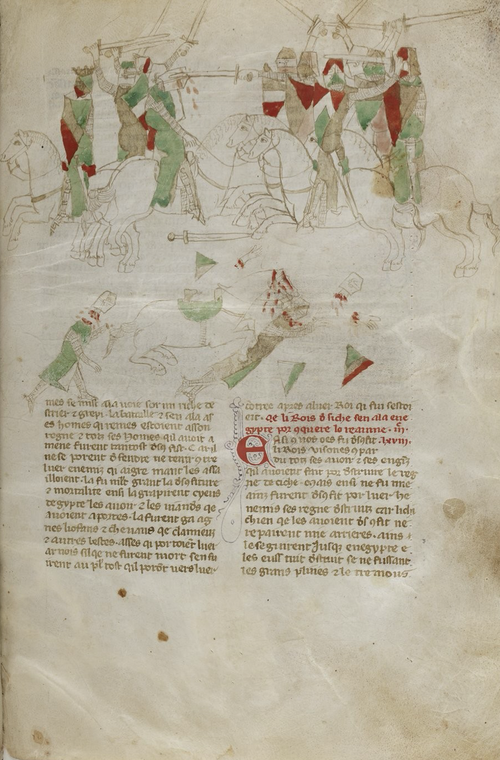
BnF fr. 1386, f. 21r. With the permission of the Bibliothèque nationale de France (source: gallica.bnf.fr).
As our digital editions of BnF fr. 20125 and Royal 20 D I proceed, we are also undertaking research, essential for this editorial work, into the manuscript tradition of the Histoire Ancienne as a whole. This task is a crucial one. Multiple issues are at stake here: the history of the dissemination of the first redaction, the exemplars used for the second redaction, as well as the historical specificity of any individual version. This last point is often a particularly interesting aspect of our research. It allows us insight into the actual contexts of the circulation of Histoire ancienne.
Research in this field requires, however, a good deal of caution. A single manuscript may, in fact, offer diverging evidence as to its origin. One excellent example of these particularly enigmatic books is BnF fr. 1386, which is a partial copy of the first redaction dating from the beginning of the 14th century. This manuscript has been the object of the attention of scholars from the 1930s onwards, but they came to different conclusions concerning its origin.
Initially, the illustrations of BnF fr. 1386 were studied by two of the greatest art historians of the 20th century, Fritz Saxl and Erwin Panofsky. They attributed them to a Neapolitan milieu, and this expertise was considered conclusive for a long time.
Some decades later, the manuscript again came to the fore. This time the discussion centred on the flyleaves, rather than on the illustrations (i. e. additional folios, added at the beginning and end of a book, to protect the text from damage). In this instance, these are in fact fragments of a much earlier manuscript. According to Alessandra Perriccioli Saggese, the script of the fragment is a 9th-century Lombard minuscule. This might suggest that the manuscript was copied, or preserved at a very early date, in Northern Italy.
Doris Oltrogge, however, came to different and maybe more convincing conclusion: in her view, the flyleaves come from an 11th-century manuscript in Beneventan script, a peculiar graphic style characteristic of southern Italy. This disagreement is not sufficient in itself to challenge Saxl and Panofsky’s judgement: these folios from the earlier manuscript, whether they were originally from Northern or Southern Italy, could easily have been used as flyleaves somewhere else altogether.
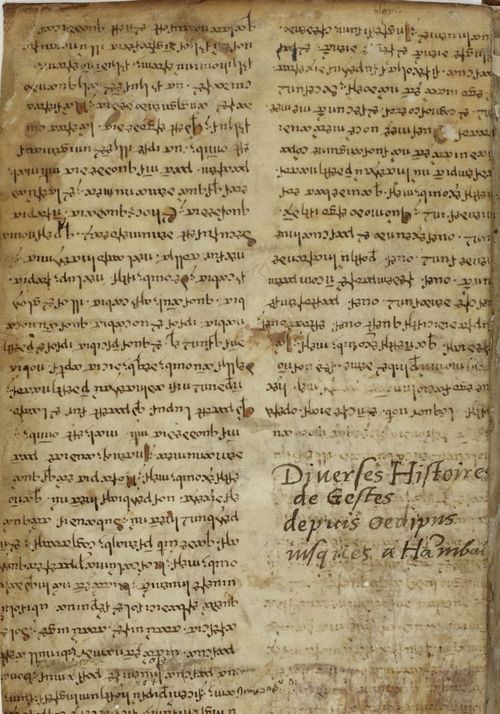
BnF fr. 1386, flyleaf. With the permission of the Bibliothèque nationale de France (source: gallica.bnf.fr).
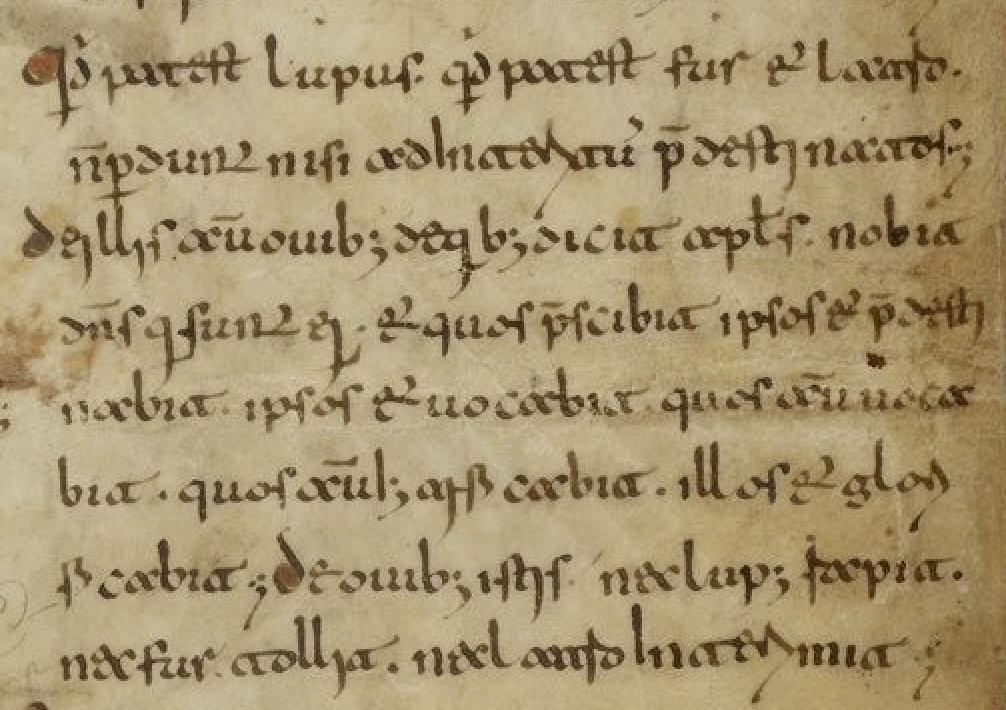
BnF fr. 1386, flyleaf (detail). With the permission of the Bibliothèque nationale de France (source: gallica.bnf.fr).
Recently, Francesca Fabbri challenged the Neapolitan origin of BnF fr. 1386 and proposed instead that it was copied by a scribe from Pisa in the prisons of Genoa. After the battle of Meloria in 1284 many citizens of Pisa were held hostage in Genoa, where they were employed in copying and illustrating manuscripts, often in French. Many of those manuscripts are preserved, and their study is currently eliciting a good deal of scholarly interest.
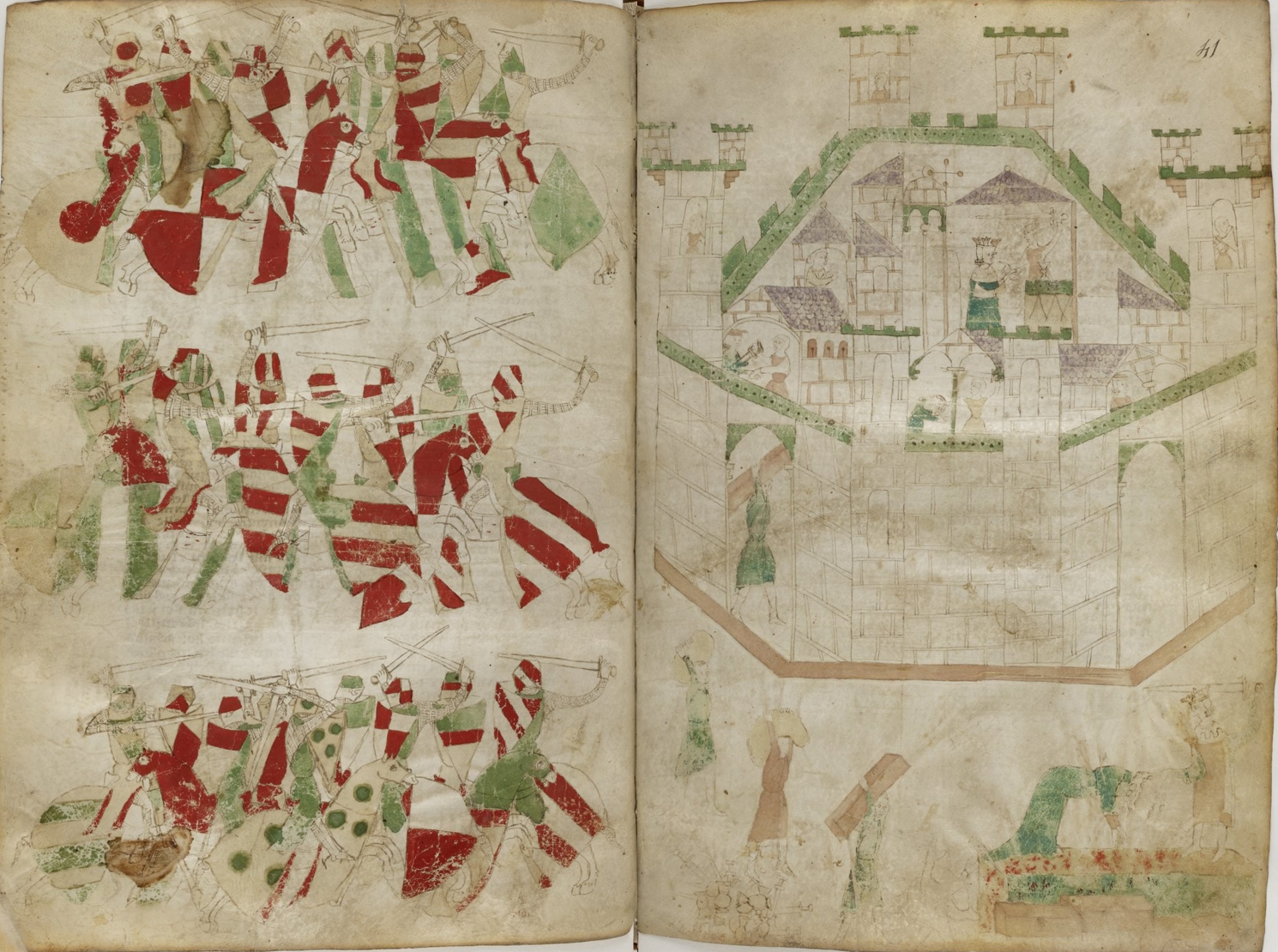
BnF fr. 1386, ff. 40v-41r. With the permission of the Bibliothèque nationale de France (source: gallica.bnf.fr).
Subsequent to the convincing arguments made by Fabbri, Fabio Zinelli has carefully analysed the linguistic traits of the text preserved in BnF fr. 1386 and compared his results with linguistic data offered by other manuscripts copied in the same Genoese context. Zinelli pointed out a range of pertinent peculiarities (particularly some graphies compatible with Occitan influence, such as eloinhie, merevolhe and vuelh, and also Occitan forms such as peire, meire, traidors, crusel) which characterise the language of this manuscript as subject to different influences, maybe taken from its models. Thanks to Zinelli’s research, BnF fr. 1386 is now considered one of the most interesting sources for our knowledge of the reception of the Histoire Ancienne in Northern Italy.
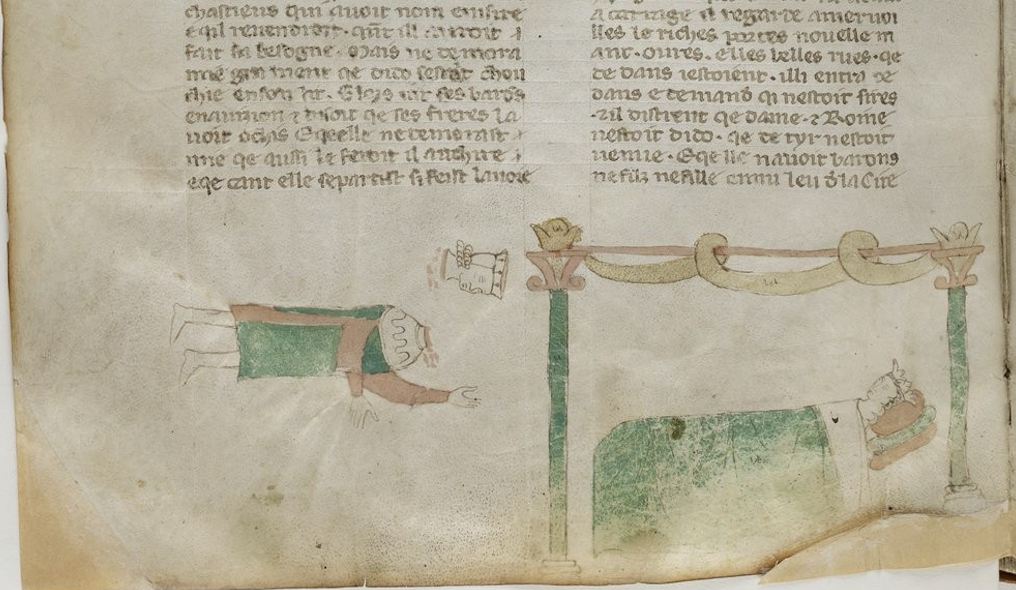
BnF fr. 1386, f. 44v (detail). With the permission of the Bibliothèque nationale de France (source: gallica.bnf.fr).
If we reflect retrospectively on the history of studies concerning this codex, it seems clear that the diverging locations attributed to the manuscript reflect the diverse influences that may have contributed to its specific material, iconographical, and linguistic features. The origin of this book may never be completely clear, and any conclusions on this matter will necessarily remain hypothetical. But, more importantly for our purposes, these difficulties in determining the origin of this manuscript stem precisely from this convergence of different influences in a single codex, and from it therefore being an excellent witness of the supra-regional character of medieval textual culture.
The case of BnF fr. 1386 illustrates one of the most significant recent shifts in the methodology used for this kind of historical research: particularly complex items are now brought to the fore, rather than discarded or confined to footnotes. The task of precisely locating a document is not necessarily any more the main goal of our critical work: any hypothesis concerning origins, is, on the contrary, just the starting point for the interpretation of the formal options chosen, inherited or introduced by scribes and illuminators and of the subsequent life of the object they produced.
Bibliography
F. Fabbri, ‘Romanzi cortesi e prosa didattica a Genova alla fine del Duecento fra interscambi, coesistenze e nuove prospettive’, Studi di storia dell’arte, 23 (2012), 9-32
D. Oltrogge, Die Illustrationszyklen zur Histoire ancienne jusqu’à César (1250-1440), Frankfurt am Main-Bern-New York-Paris 1989.
A. Perriccioli Saggese, I romanzi cavallereschi miniati a Napoli, Napoli 1979.
F. Saxl and E. Panofsky, ‘Classical Mythology in Medieval Art’, Metropolitan Museum Studies, 22 (1932-33) pp. 228-280.
F. Zinelli, ‘I codici francesi di Genova e Pisa: elementi per la definizione di una scripta’, Medioevo romanzo, 39 (2015), 82-127.